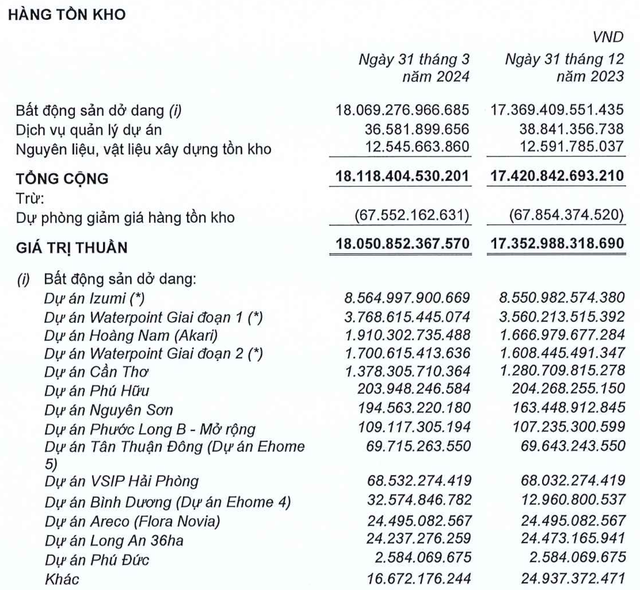Silver Shines: Prices Surge as Demand Grows
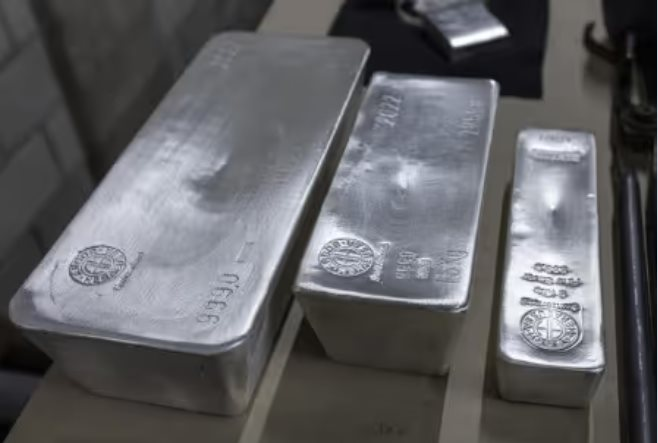
On Thursday (April 19), spot silver prices rose 0.9% to $28.44 per ounce. Previously, prices reached $29.79 per ounce on Saturday (April 12), the highest level in over three years, during an uptrend that began in early March 2024.
With a gain of nearly 20% year-to-date, including a surge of 26% since the beginning of March 2024, silver has outperformed gold.
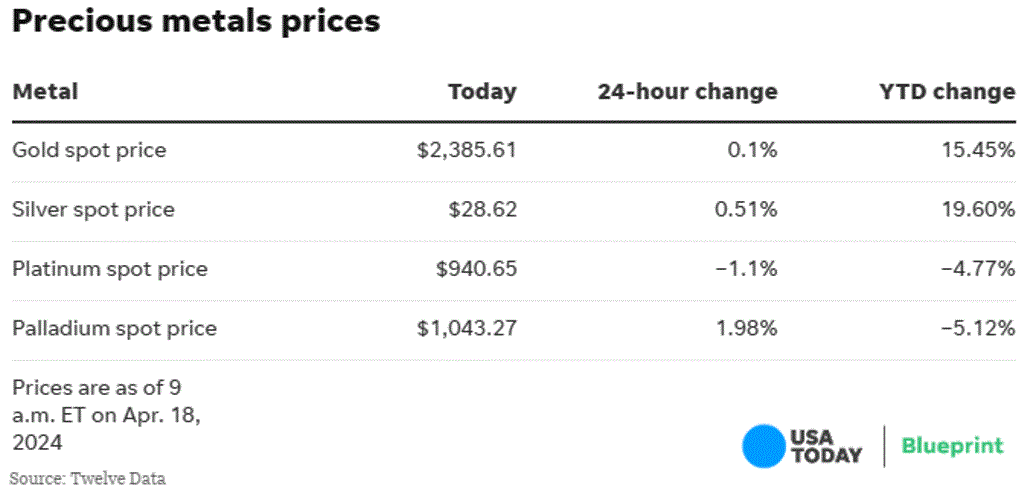
Silver has been the strongest performer among base metals year-to-date.
The market anticipates that silver’s rally is not over yet. While prices may undergo technical corrections, they are expected to rebound and reach $30 per ounce, supported by the halo effect of record-high gold prices and the impact of rising copper prices.
Silver last touched the $30 level in February 2021.
However, analysts also note that silver – which is both an investment asset and an industrial metal used in electronics and solar panels – may struggle to hold above $30 for an extended period if global manufacturing activity and demand from investment funds fail to recover.
“Silver is starting to act more like a precious metal and less like an industrial metal,” said Philip Newman, managing director of consultancy Metals Focus.
“The gold-silver ratio has come down quite a bit since the start of April 2024, and from a technical perspective, it looks like it could be ready for a correction [a price drop], but there’s still huge momentum, which suggests it can still go to $30.”
The gold-silver ratio, which indicates how many ounces of silver can be purchased with one ounce of gold, is used by the market to assess future trends as it shows silver’s current performance against silver’s historical correlation with gold.
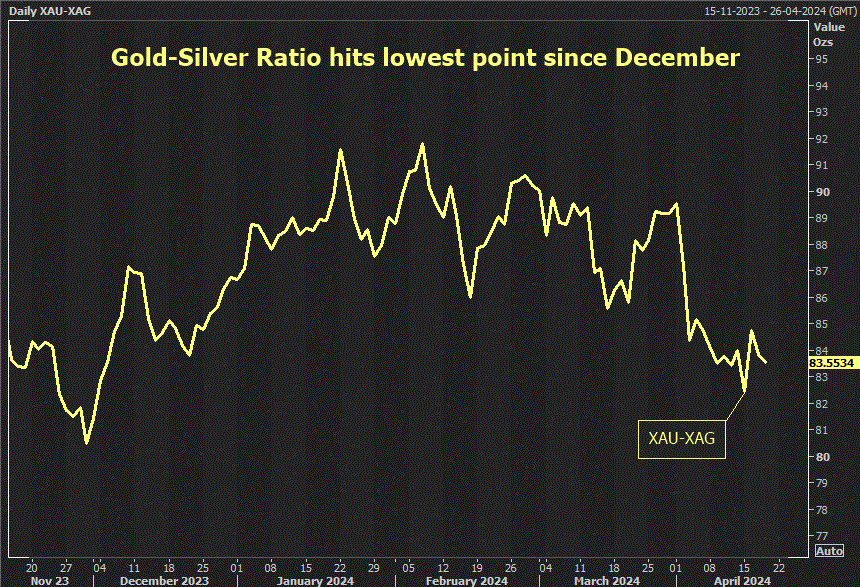
The gold-silver ratio is at its lowest since December 2023.
Citibank even suggests that investment demand for silver could drive prices up to about $32 per ounce in the second half of 2024.
However, the white metal’s volatile past has left some analysts cautious about the current rally.
“Silver has a spectacular ability to correct hard and fast,” said StoneX analyst Rhona O’Connell. The metal surged to nearly $50 in 2011 only to crash to $12 in 2020.
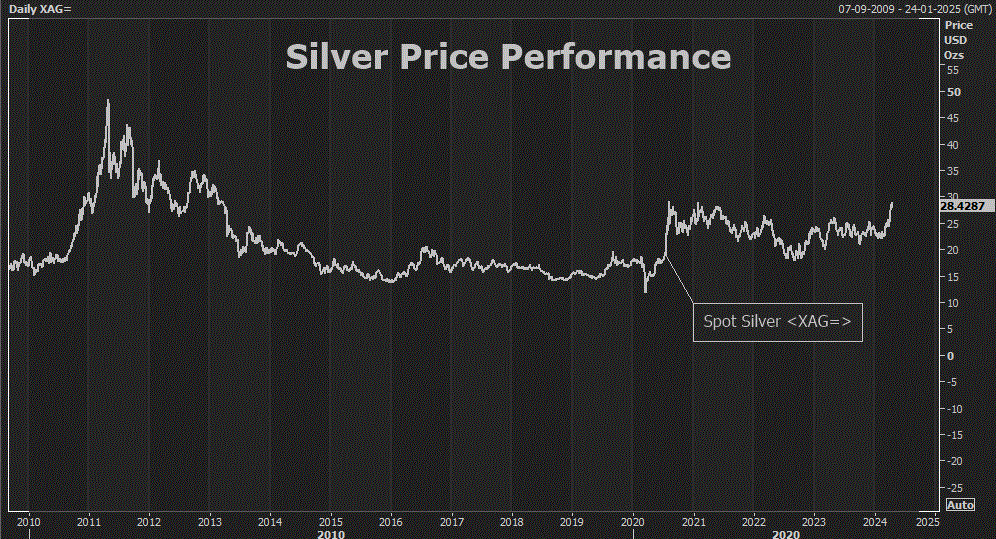
Silver’s large historical price swings.
On the supply-demand front, Metals Focus predicts the silver market will face a fourth consecutive year of deficit this year, with demand expected to increase from the industrial sector in 2024.
To see silver trade above $30, the market will need to see manufacturing recover and demand for solar energy rise, said Phillip Streible, chief market strategist at Blue Line Futures in Chicago.
In China, a major silver-consuming market, manufacturing activity expanded in March 2024 for the first time in six months of contraction.
There are signs of growing demand for silver from other sectors, such as a strong inflow into silver exchange-traded funds (ETFs) in April 2024, but no sustainable trend has yet emerged.
“Recent weeks have seen a reversal of silver ETF flows, and I think that’s a function of the silver price itself,” said Maria Smirnova, a senior portfolio manager at Sprott Asset Management. “In other words, ETF flows have been following price rather than leading it.”
“So if silver continues to rally, I would expect ETF flows to continue and perhaps even accelerate.”
Macquarie also projects a silver supply deficit over its five-year forecast period, although ample above-ground stocks continue to cushion the shortfall.
However, uncertainties in the global economic outlook, particularly in the electronics sector which is important for industrial demand for silver, could limit the metal’s upside in the near term.
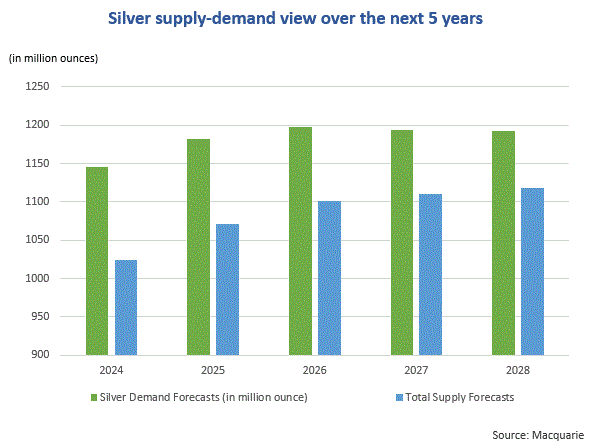
Macquarie’s silver supply-demand forecast for the next five years.
The Silver Institute (SI) survey expects the global silver supply deficit in 2024 to widen by 17% to 215.3 million ounces, driven by a 2% rise in demand – led by stronger industrial consumption – and a 1% decline in total supply.
“The market deficit in silver has been the driving force behind the strong price increases,” said Philip Newman, managing director at consultancy Metals Focus, which conducted the survey. “Last year’s deficit was down by 30%, but







































